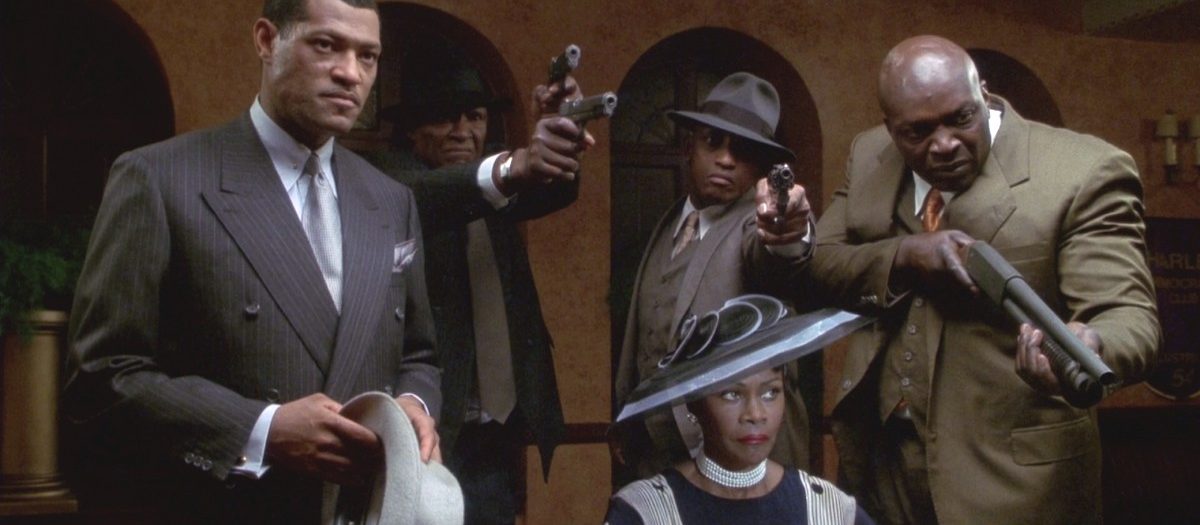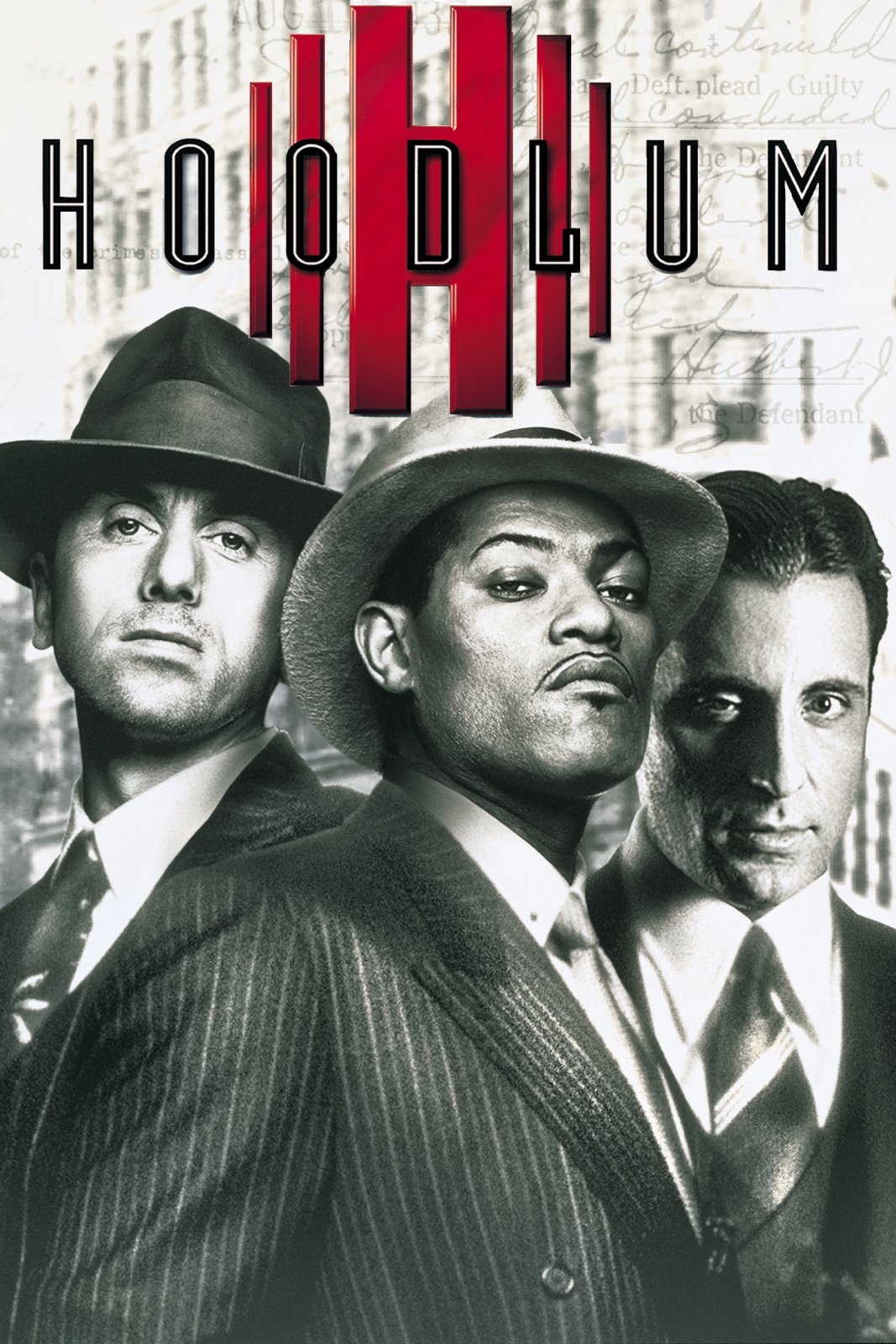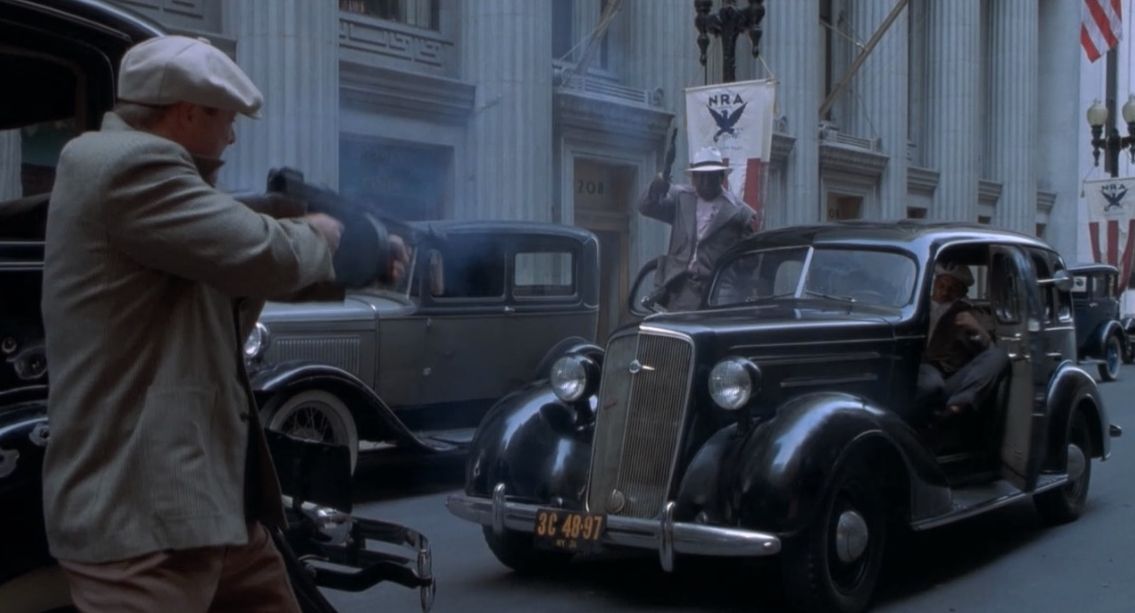

“He’d rather lose a testicle than give a dollar up to the government.”
I didn’t intend to watch The Cotton Club and Hoodlum in such close proximity. Or rather, I did, I just didn’t realize that they featured many of the same historical characters and subject matter. I knew that The Cotton Club was considered a second-tier Coppola film and that Hoodlum featured Tim Roth and Laurence Fishburne as gangsters, which were sufficient endorsements for me to queue them up. In both films, Fishburne portrays Ellsworth “Bumpy” Johnson, an infamous drug trafficker and associate of Stephanie ‘Madam Queen’ St. Clair, who ran a numbers racket during the Great Depression. Although he only makes a few small appearances in Coppola’s film, Fishburne’s the star of Bill Duke’s crime drama, as Bumpy returns from prison to the streets to catch up with old friends, make new business connections, and start a gang war with the mafia. There’s plenty of bloodshed, some interesting if misguided forays into comedy, and undertones of social commentary. It ends up feeling a bit devoid of substance, especially in comparison to Coppola’s film, but there’s plenty of fun to be had watching the gangsters bluster and kill at the slightest provocation while the bloated film meanders about for a couple hours.
Fresh out of Sing Sing, Bumpy integrates himself into his community with his undeniable charm. He interrupts the illicit love-making session of his cousin, “Illinois” Gordon (Chi McBride), asserts his influence on the numbers game, and makes his presence known to the mafia with efficient brutality. Much blood is spilled, many innocent people are corrupted and killed, and all this over the mafia encroaching on Bumpy’s territory. As the film goes on, the sophisticated Bumpy, who will write and recite poetry or play chess as soon as knock off an unwanted goon, finds himself rising to the top of his trade. But in the process the gangster loses friends and family to death or alienation, until the final scene finds him walking out of his cousin’s funeral all by himself.
Starring opposite Fishburne is Tim Roth, who plays the real-life mobster Dutch Schultz. At first, I thought his performance was a little bit on-the-nose. I never changed my opinion on that, but by the end of the film it had grown on me. He obstinately chews an apple while Lucky Luciano (Andy Garcia) tries to lead a Commision meeting; he presents Madam Queen (Cicely Tyson) with the severed testicles of a rival; and he bows out with an unnerving death scene. His exuberant performance prominently contrasts with Fishburne’s stoic demeanor.

I don’t know how closely the film hews to the actual facts of Bumpy’s life and career, but it is evident that Duke’s version of the story has a problem—either Bumpy was a heartless devil who used the loyalty of others in service of his greed, or it doesn’t adequately convey the depth of his relationships to adequately capture the drama of the story. My hunch is that it may be a combination of these issues, compounded by Duke’s troubles with staging and directing intimate scenes. As presented in Hoodlum, Bumpy’s relationships feel very casual, even with his cousin Illinois and his love interest Francine (Vanessa Williams); as if without their utility in his line of work he would drop them. What’s interesting to me is that the gist of the story is that Bumpy wants to take the numbers racket back from Dutch Schultz. This is presented as a noble cause, as if it’s fair to rip off the destitute black community, but only if it’s done by a black person. Color me skeptical that Bumpy Johnson is actually the good guy here. It’s in this way that Hoodlum gets stuck somewhere between glamorizing the gangster lifestyle and trying to paint Bumpy as a sympathetic character. It fails to glamorize because it lacks the verve and style of films like The Godfather and Scarface. And it fails to draw us in through character because the portrayal lacks complexity and depth.
But the shortcomings on the personal drama front are compensated for by a smorgasbord of stylish shootouts and mafia confrontations. Duke’s much more comfortable directing the action sequences. There’s a mass murder choreographed to opera, Tim Roth gets to spout off to his heart’s content, and Bumpy, upon discovering that his sundae is laced with rat poison, forces the young man who prepared it to eat it himself. There’s also a great sequence where Bumpy and Illinois discretely deliver a bomb to one of Schultz’s illegal beer distribution centers and make it out just before it explodes. These tense and violent scenes are uniformly great, with a number of supporting roles given small moments in the spotlight. The film really hits its stride in the concluding section, where Bumpy cooks up a scheme to outwit Dutch. It’s a shame that the film doesn’t quite work as a whole, because so many of the individual set pieces are great.
Bolstering the entire film is an attention to period detail. When Bumpy first gets out of prison he returns to a Harlem bustling and alive with the spirit of the times. Jazz music plays, everyone gets dressed up at the smallest provocation, and the buildings, cars, and decor all pass the sniff test. The worst part about this lavish production and grand assemblage of talent is that a really good movie could have come out of it. Unfortunately, the script isn’t up to snuff and, whether due to the production schedule or egos or whatever, it never received the polish it needed. Everyone involved did the best with what they were given, but that doesn’t leave us with anything more than a derivative gangster flick with some great performances and a few impeccable sequences, kneecapped by some clumsy dramatic arcs and stilted dialogue.